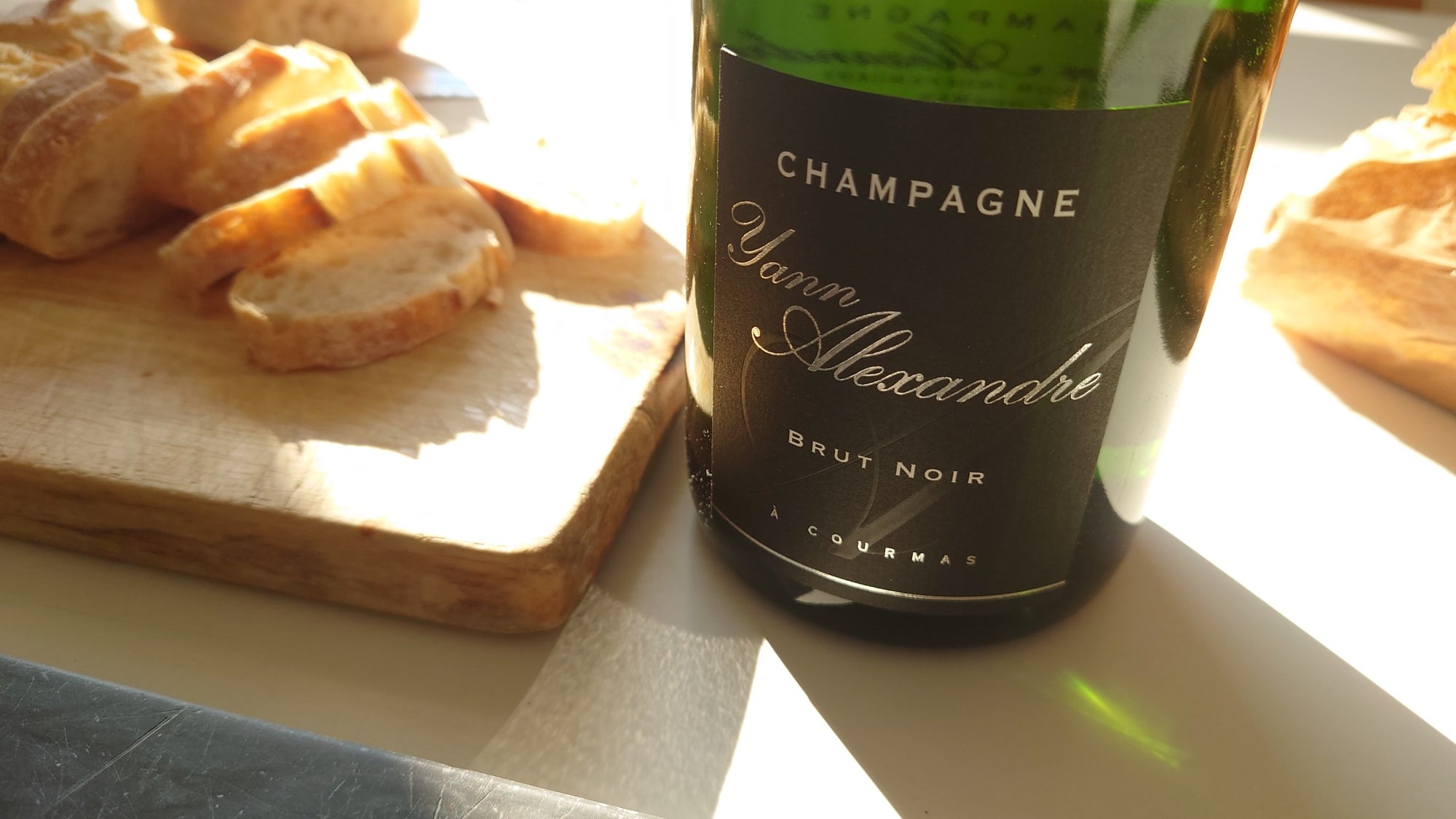
When Diesel - the ultra trendy purveyor of $300 (₤160) jeans - decided to get into the wine business this year with equally expensive wines, they got the grape varieties all wrong. Sorry but Chardonnay, Merlot, Cabernet Sauvignon and Pinot Noir simply aren’t the vinous equivalent of denim. That honor would go to Carignan, which like denim is often coarse, cheap and casual. They’re also both associated with the Languedoc: denim is named after a type of cloth called Serge de Nîmes from the Languedoc city of Nîmes while Carignan has been grown in huge quantities in the region for over a century.
As a high yielding grape, Carignan was one of the main sources of cheap plonk back in the days when the average French worker packed a bottle of vin rouge for lunch and then had another bottle with dinner. Since this market doesn’t exist anymore*, the EU has spent a great deal of money grubbing up Carignan vines in an attempt to help control the global wine glut. Indeed, from 1990 to 2002, total world acreage of Carignan was reduced 42% from 501,300 acres down to 290,400 acres but is still the 8th most widely planted wine grape variety.
Carignan (known as Carignane in California, Carignano in Italy and Cariñena in Spain) has also been one of the most critically disparaged grapes in the world. 100% Carignan wines aren’t allowed according to AOC laws so it’s usually relegated to a blending partner in Minervois and Corbieres. According to Jancis Robinson in the Oxford Companion to Wine, “Its wine is high in everything – acidity, tannins, colour, bitterness – but finesse and charm.” Ouch. Still, she does concede that it can make exceptional wine in the right hands and cites Domaine d’Aupilhac in Montpeyroux and Chateau de Lastours in Corbieres. 
The tide now seems to be changing for Carignan. On our recent trip to the Languedoc, we found “100% Carignan” signs proudly displayed at several wine shops and asking for Carignan wines on restaurant wine lists would get knowing nods of approval. How could this be? For starters, the French love an underdog. And perhaps the rough image of the grape just naturally goes with the rugged landscape, especially the garrigue, the wild scrub of dwarf oak, thyme, rosemary, lavender, gorse, broom, heather and fennel that is everywhere. Or perhaps it’s part of a larger worldwide movement to embrace indigenous grape varieties (does the world really need more Merlot?). Whatever the reason, more and more talented winemakers are embracing Carignan, particularly in the Languedoc, where it is produced as a Vin de Pays.

One of the more talented (and vocal) producers is the Clos du Gravillas, run by John and Nicole Bojanowski in St. Jean de Minervois. They’ve been leading the Carignanistas in Laguodoc through their events and by producing great Carignan wines. Old vines, low yields and careful élevage shows just what is possible. Their 2003 Rendez-Vous du Soleil  is an excellent example: refreshing, well balanced and refined but pleasantly casual. Their 2003 Lo Vièlh
is an excellent example: refreshing, well balanced and refined but pleasantly casual. Their 2003 Lo Vièlh  shows just how opulent and elegant Carignan can be. It’s an amazingly refined and concentrated expression that’s drawn critical acclaim and enthusiastic responses even from the haughty Parisians.
shows just how opulent and elegant Carignan can be. It’s an amazingly refined and concentrated expression that’s drawn critical acclaim and enthusiastic responses even from the haughty Parisians.
In addition to making great wine, John and Nicole head up the Carignan Renaissance, which promotes this disparaged grape throughout the world. In 2004, they organized the 1st Carignan World Tasting and invited an illustrious panel, including Jancis Robinson, to size up the world’s Carignan wines. Some wines, like their Clos du Gravillas’ received high marks but didn’t really sway some critics like Ms. Robinson to substantially change their views. Perhaps if it were a completely blind tasting (also called double-blind where the tasters don’t know anything about the wines) preconceived notions about the grape could be challenged.
OK, all of that sounds great but I’m in the USA. How do I get in on the HIPSTER CARIGNAN ACTION? Perhaps the easiest way is to run – not walk – to your local wine shop and pick up a bottle of Les Hérétiques. Produced by Andre Iché of Chateau d’Oupia, it’s a cuvee of 97% Carignan and 3% Syrah, imported (and developed with) Louis/Dressner . Les Hérétiques refers to the Cathars who were massacred in the 13th Century by the crusaders for their heretical beliefs and also to Carignan which is currently being massacred by the European Union. The wine is earthy, soft, fruity, slightly rustic, and was a staple at Chez De Long when we lived in New York City. It’s widely available and a great introduction to the pleasures of Carignan. And for roughly the price of a bottle of [yellowtail] you can’t go wrong.
Conclusion: Diesel Merlot = uncool; Hipster Carignan = tres cool
*Per capita wine consumption in France declined from 108 liters to 57 liters from 1970 to 2001. French actor and vineyard owner Gerard Depardieu has single handedly attempted to reverse the trend. In his own words (translated): “On a good day, I have four bottles. On a bad day, six.”
Resources: Worldwide Carignan Producer's List


Comments
Nice article.
Meeker and Alderbrook, both in Sonoma Couty, make very nice Carignane. I don’t know the exact blend of each but they’re at least 75% carignane since that’s all they list on the label. The Meeker is in the low to mid 20’s and I think the Alderbrook is less than that. I’m pretty sure I’ve seen a few other wineries in Sonoma bottling some of this much underappreciated grape.
Don’t forget our good friends at Ridge in California. They champion a straight carignan that is quite delicious. Many oldtimers are pretty proud of their older carignan vines in the north coast. Great article. Does Diesel give case discounts on jeans?
Hi Erwin and Eric — Thanks for the notes. I forgot to post the Worldwide Carignan Producer’s List that John Boganowski put together. Ridge and Meeker are both on it. I’m sure John would appreciate updates to the list such as Alderbrook. I recently had a Boony Doon Ca de Solo Carignane that was also very good. The amazing thing about this grape is that virtually all of the vines are very old (since no one has planted it for a long time) and can produce wines of great complexity for not a lot of dinero. As for Diesel, I doubt they even give case discounts on wines. Who in their right mind would shell out $200+ for a bottle of their wine? The en primeur 2005 Bordeauxs start to look like a bargain. . .
I write about wine for that’s Shanghai, an English language monthly in a market far less sophisticated about wine than… practically anywhere. I subscribed to the De Long Wine Moment several months ago, and I am surpassingly glad that I did. “Carignan, HIpster Wine” is a masterful piece of wine journalism. You’re in the right business, Mr. De Long. I will look forward with great anticipation future installments.
Regards,
C.P.Lee
Shanghai
Thank you, Steve!
Very very nice and informative article. I will take a glass of Carignan tonight instead of Merlot or Syrah… I´m not sure if I wear my Diesel anymore :)
Greetings from Finland to all of you wine enthusiast!
Unfortunately there´s only one 100% Carignan wine in our Alko shops in Finland, Selian Carignan, Calatrasi, AC Sidi Salem, Tunisia
Dear C.P.Lee,
Flattery will get you nowhere. Except, of course, here. Thank you for the very kind words of encouragement. Shanghai may not be a sophisticated market but must be a very interesting one with virtually every major winemaker looking for market share.
Cheers,
Steve
Thank you, Marjo — Tunisian Carignan, now that sounds exotic (at least to me since I’ve never tried it). The vines are most likely old but I certainly can’t vouch for the winemaker. If you get it, please let me know how it was.
Cheers and greetings to a fellow Wine Centurian,
Steve
I’ve tried an absolutely fantastic 100% Carignan made from very old vines called La Flame Noire de Chandelles. I bought it from www.justgreatwine.co.uk.
Had no idea about the Nîmes/denim connection but now that I think about it, it does make sense, as does your carignan jeans analogy. Good fun reading! And I have to say if Jancis doesn’t like it than it probably means I swallow truckloads of the stuff. I follow every word she says but I’ve still got to live in my own world, which is one frequently populated by Carignan-filled vin de pays. Mmmm.
To tell you the truth, I feel like a lot of these vin de pays brands are still a bit shy about revealing their Carignan. Sometimes, I appreciate a wine that I sense has a lot of Carignan in it but end up frustrated searching to find out the percentage in the blend.
One great blend (of Carignan and Merlot of all things) is the Michel Marty cuvée named L’If.